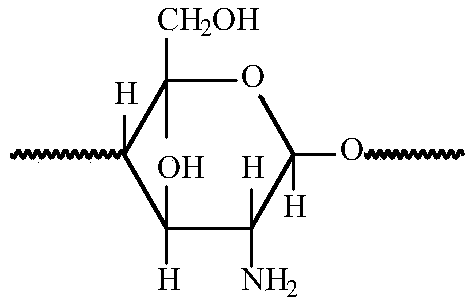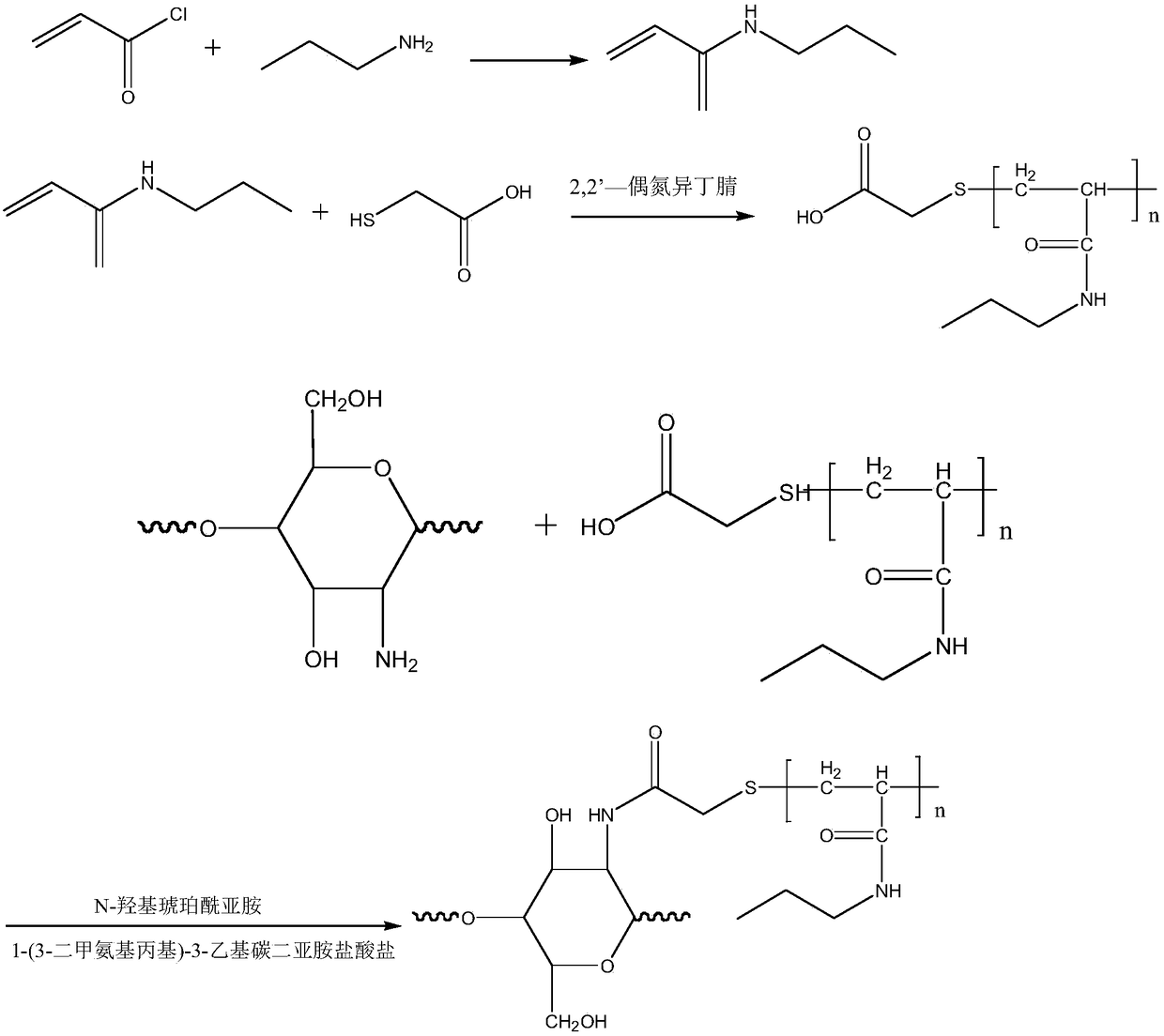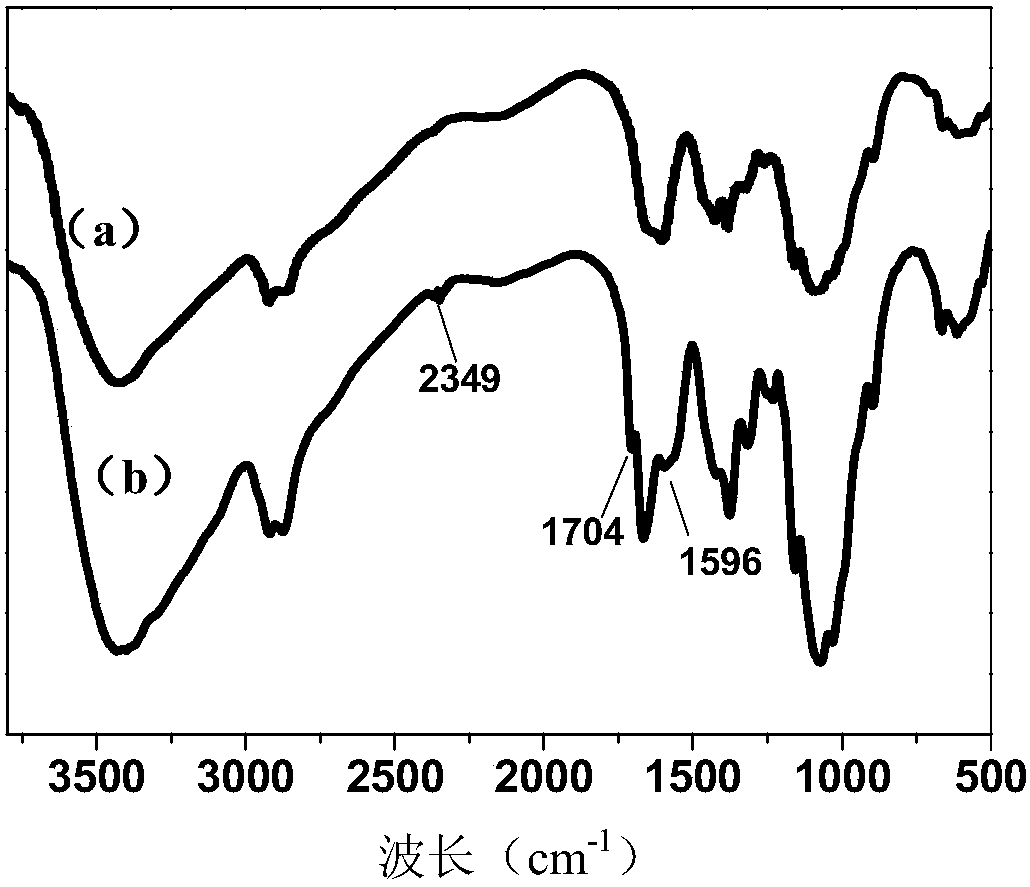A kind of temperature sensitive chitosan flocculant and its preparation method and application
A chitosan, sensitive technology, applied in the field of temperature-sensitive chitosan flocculant and its preparation, can solve the problems of temperature sensitivity without temperature switch, limited application range, etc., and achieve no risk of secondary pollution , Excellent flocculation ability, enhanced bridging flocculation effect
- Summary
- Abstract
- Description
- Claims
- Application Information
AI Technical Summary
Problems solved by technology
Method used
Image
Examples
Embodiment 1
[0054] Dissolve acryloyl chloride, n-propylamine and triethylamine in toluene respectively (the molar ratio of acryloyl chloride, n-propylamine and triethylamine is 1:1.1:1.2) and set aside. At 4°C, the acryloyl chloride solution was slowly added dropwise to the mixed solution of n-propylamine and triethylamine (toluene as the solvent) while stirring for 1 hour, and then the mixture was stirred and reacted at 25°C for 24 hours. The reaction mixture was filtered to remove the formed precipitate to obtain a monomer (in toluene) solution. Dissolve thioglycolic acid in toluene (the molar ratio of acryloyl chloride to thioglycolic acid is 20:1), place it in a round bottom flask, and stir to dissolve completely. The temperature was raised to 60° C., and nitrogen gas was passed through for 30 minutes to remove oxygen in the solution. Add 2,2'-azoisobutyronitrile (AIBN for short, the solvent is toluene, the molar mass ratio of 2,2'-azoisobutyronitrile to acryloyl chloride is 1:2, tol...
Embodiment 2
[0057] Dissolve acryloyl chloride, n-propylamine and triethylamine in toluene respectively (the molar ratio of acryloyl chloride, n-propylamine and triethylamine is 1:1.2:2) and set aside. At 4° C., the acryloyl chloride solution was slowly added dropwise to a mixed solution of n-propylamine and triethylamine (toluene as a solvent) while stirring for 1 hour, and then the mixture was stirred at 30° C. for 12 hours. The reaction mixture was filtered to remove the formed precipitate to obtain a monomer (in toluene) solution. Dissolve thioglycolic acid in toluene (the molar ratio of acryloyl chloride to thioglycolic acid is 18:1), place it in a round bottom flask, and stir to dissolve completely. The temperature was raised to 70°C, and nitrogen gas was passed through for 30 minutes to remove the oxygen in the solution. Add 2,2'-azoisobutyronitrile (the solvent is toluene, the molar mass ratio of 2,2'-azoisobutyronitrile to acryloyl chloride is 1:3, the solvent and 2,2'-azoisobutyro...
Embodiment 3
[0060] Dissolve acryloyl chloride, n-propylamine and triethylamine in toluene respectively (the molar ratio of acryloyl chloride, n-propylamine and triethylamine is 1:1.3:1.4) and set aside. At 4° C., the acryloyl chloride solution was slowly added dropwise to a mixed solution of n-propylamine and triethylamine (toluene as the solvent) while stirring for 1 hour, and then the mixture was stirred at 23° C. for 15 hours. The reaction mixture was filtered to remove the formed precipitate to obtain a monomer (in toluene) solution. Dissolve thioglycolic acid in toluene (the molar ratio of acryloyl chloride to thioglycolic acid is 16:1), place it in a round-bottomed flask, stir and dissolve completely. The temperature was raised to 80°C, and nitrogen gas was passed through for 30 minutes to remove the oxygen in the solution. Add 2,2'-azoisobutyronitrile (the solvent is toluene, the molar mass ratio of 2,2'-azoisobutyronitrile to acryloyl chloride is 1:4, the solvent and 2,2'-azoisob...
PUM
 Login to View More
Login to View More Abstract
Description
Claims
Application Information
 Login to View More
Login to View More - R&D
- Intellectual Property
- Life Sciences
- Materials
- Tech Scout
- Unparalleled Data Quality
- Higher Quality Content
- 60% Fewer Hallucinations
Browse by: Latest US Patents, China's latest patents, Technical Efficacy Thesaurus, Application Domain, Technology Topic, Popular Technical Reports.
© 2025 PatSnap. All rights reserved.Legal|Privacy policy|Modern Slavery Act Transparency Statement|Sitemap|About US| Contact US: help@patsnap.com



